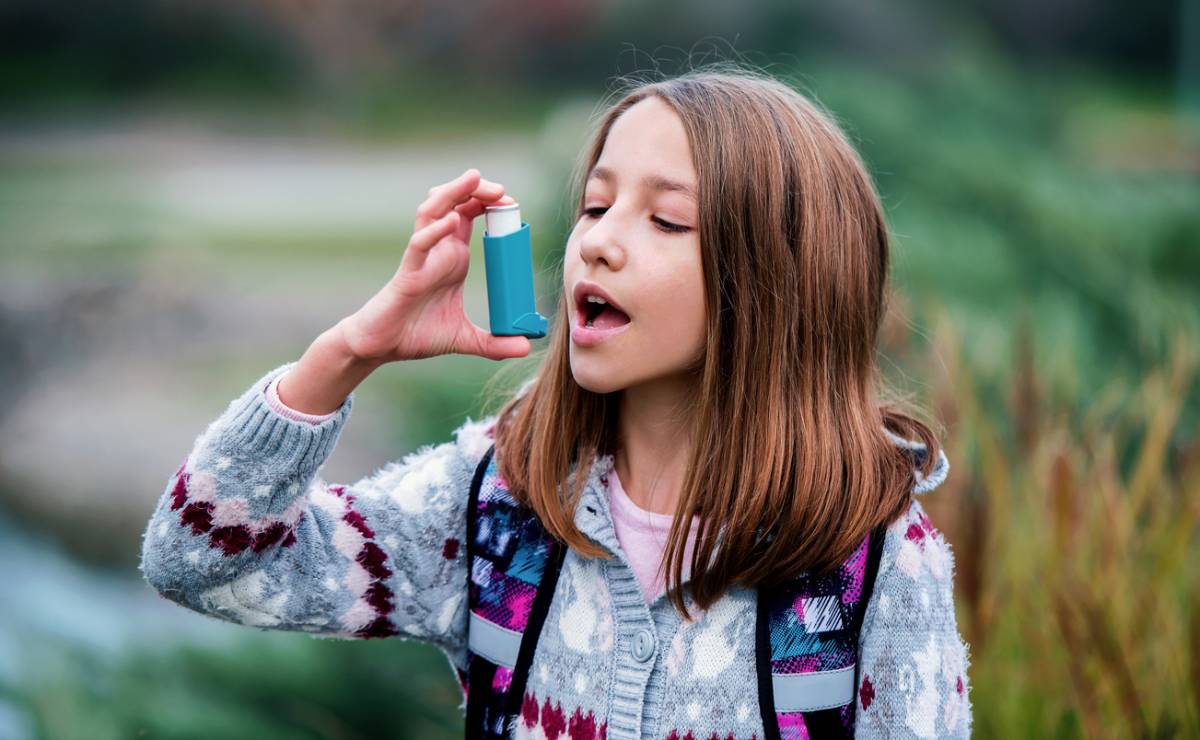Asthma is a condition where the airways in the lungs become swollen and narrowed. This makes it much harder to breathe. It can also cause unwanted symptoms, such as coughing and poor sleep. Early diagnosis and pediatric asthma treatment are essential to reduce symptoms in children. A major part of managing asthma is reducing exposure to triggers. Each patient is uniquely different when it comes to what can cause symptoms. You may wonder, is pollution making kids’ asthma worse? Below you will find helpful information on managing asthma symptoms in children.
Is Pollution Making Kids’ Asthma Worse?
Research shows that air pollution plays a major role in worsening asthma. Pollution includes things like fine particles, nitrogen dioxide, and other chemicals. These pollutants can come from cars, factories, wildfires, or indoor sources. Children are especially vulnerable to pollution for several reasons. They breathe more air per unit of body size. They spend more time outdoors or near sources of pollution. Their lungs are also still growing. These factors make children especially vulnerable to the harmful effects of pollution.
In children with asthma, pollution can trigger more asthma attacks and unwanted symptoms, and worsen lung function. Research has shown that when pollution levels rise, children experience more coughing and wheezing. They also have to turn to rescue medication much more often. It has been found that children in urban areas are exposed to higher levels of fine particles and ozone. This was directly tied to asthma attacks that were not linked to infections or viruses.
Pollution and the Development of Asthma
Pollution not only impacts children who have asthma, but it has also been linked to the development of asthma. Children exposed to pollution in their first three years of life had a higher risk of asthma later in life. Traffic-related pollution has been a major offender. In fact, millions of children across the globe develop asthma because of traffic-related pollution.
Understanding the effects of pollution is critical for parents. Early awareness can help protect children’s lungs. Taking measures to reduce the effect of pollution on children’s health is essential. This includes checking air quality and limiting outdoor activity on high-pollution days. Indoor air purifiers are also a critical factor in reducing the risk of asthma in children. If your child develops asthma symptoms, early intervention is necessary.
Indoor versus Outdoor Pollution
Pollution can impact both indoor and outdoor air quality. People most commonly think of outdoor air quality when they hear the word ‘pollution’. However, indoor air quality is just as important for children with asthma. Pollutants inside homes can trigger asthma symptoms and irritate the lungs. Common indoor air pollutants include dust, dust mites, mold, soot, smoke, and chemicals. Indoor pollution can cause wheezing, coughing, and shortness of breath. It can also trigger more frequent asthma attacks. When this occurs, it can make it harder for children’s lungs to develop normally.
Lowering indoor pollution is equally important as reducing outdoor exposures. There are several effective methods to do this. Air purifiers and HEPA filters can clean indoor air. Mold growth is a major contributor to asthma symptoms. Keep the humidity low, as moisture can increase the risk for mold growth. This is especially common in the bathroom. Cleaning regularly is essential. Dusting, vacuuming, and cleaning soft surfaces can reduce indoor pollutants. When you clean, avoid heavily scented products and strong chemicals. Taking these measures can improve indoor air quality. In turn, this can reduce the impact on children with asthma in the home.
Factors That Worsen or Increase Risk for Asthma
Not all children are impacted by pollution in the same way. Some children are more vulnerable than others. Several key factors can worsen asthma or increase its risk.
Urban or Low-Income Neighborhoods
Children living in low-income or urban neighborhoods are exposed to higher levels of pollution. This includes industrial pollution, traffic, and smoke. These neighborhoods often have fewer green spaces. They also have higher exposure to dust or secondhand smoke. These actors can irritate developing lungs. They can also increase the risk of developing asthma or worsening symptoms.
Allergies
Children with allergies have sensitive airways. When pollution is combined with allergies, children’s lungs become more reactive. Common symptoms include coughing, wheezing, and asthma attacks. This is common in children who are allergic to pollen, dust mites, and pet dander.
Family History
If a parent or close family member has asthma, a child is more likely to develop the condition. Genetics influences how sensitive a child’s lungs are. This includes environmental triggers, such as smog or smoke. Even moderate pollution can cause stronger reactions in children with a family history of the condition.
Treatment for Pediatric Asthma
When a child has asthma, it is essential to have them on a customized treatment plan. Due to children’s developmental needs, ongoing care is necessary to adjust treatment accordingly. Treatment includes medication and lifestyle changes.
Asthma Medication
Treatment from a board-certified pulmonologist includes long-term and quick-relief medication. Long-term medication often includes corticosteroids, leukotriene modifiers, or combination inhalers. These are effective in reducing inflammation and managing symptoms. Quick-relief inhalers are used during an asthma attack or when symptoms flare up.
Lifestyle Changes
Certain lifestyle modifications can significantly improve symptom management. These changes should be combined with medication for optimal benefits. The most effective lifestyle changes include reducing triggers and controlling allergens. Supporting long-term lung health is also essential. This includes regular physical activity recommended by a board-certified pulmonologist. A balanced diet and maintaining a healthy weight are also beneficial for long-term lung health.
Ongoing Monitoring
Monitoring your child’s asthma symptoms can provide a lot of helpful information. Tracking triggers —including timing and severity —can help inform the ongoing asthma treatment plan. Attend all of the scheduled appointments with your child’s allergy specialist. They can take the ongoing symptom tracking and modify the treatment plan accordingly.
Board Certified Pulmonologist
If your child struggles with asthma, contact Dr. Shukla at the Asthma & Sleep Institute today to schedule an appointment!

